Climbing ropes are essential tools for climbers, providing the crucial safety and security needed while ascending vertical terrains. However, just like any other equipment, climbing ropes have a limited lifespan. Knowing when to retire a climbing rope is of utmost importance to ensure your safety during climbs and maintain the rope’s durability.
Understanding the lifespan of your climbing rope is vital for responsible climbing practices. By considering various factors such as frequency of use, type of climbing, environmental conditions, and proper maintenance, you can make informed decisions about the retirement of your climbing rope. In this article, we will provide you with valuable insights and actionable tips to help you determine the right time to retire your climbing rope.
Table of Contents
Influential Factors Affecting the Lifespan of a Climbing Rope
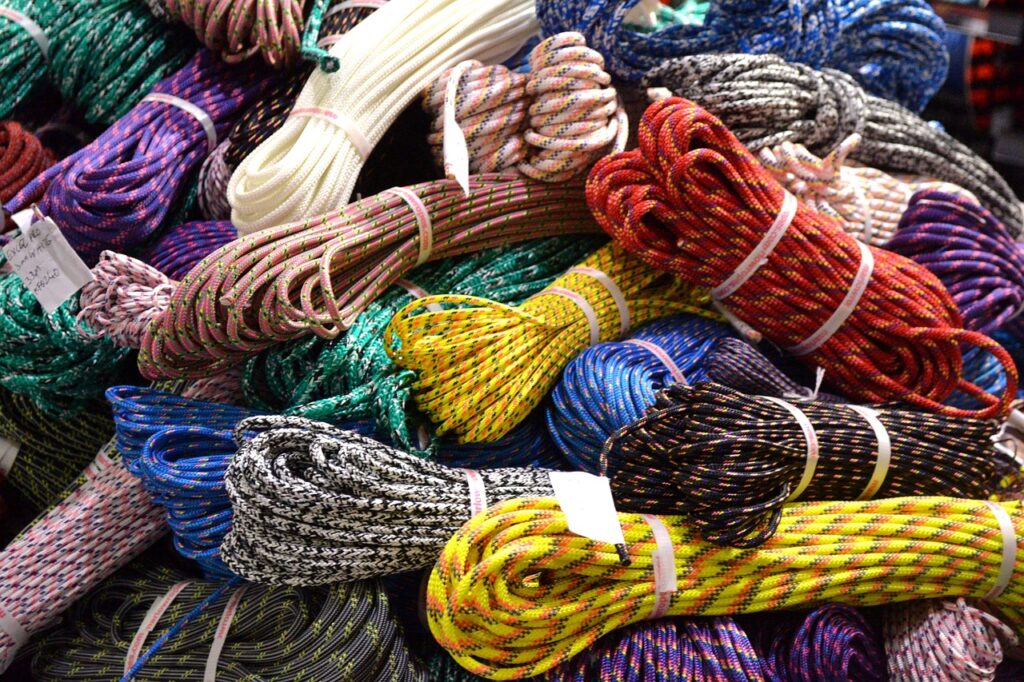
Several factors contribute to the durability and lifespan of a climbing rope. Understanding these factors is crucial for climbers to make informed decisions about their gear and ensure their safety during climbs. Let’s explore the key elements that influence the lifespan of a climbing rope:
Frequency of Use
The frequency of use is a significant factor that affects the lifespan of a climbing rope. The more you use your rope, the quicker it will wear out. Regular use exposes the rope to friction, abrasion, and potential damage. Each time you climb, the rope undergoes stress and strain, gradually weakening its fibers. Frequent use accelerates this process, shortening the overall lifespan of the rope.
To assess the frequency of use, consider how often you engage in climbing activities. Climbers who climb several times a week or participate in intense training sessions may experience faster rope deterioration compared to those who climb occasionally. It’s important to keep track of your climbing activities and be aware of how frequently you’re putting your rope to use.
Type of Climbing
The type of climbing you engage in can also impact the lifespan of your rope. Different types of climbing, such as sport climbing or trad climbing, subject the rope to varying levels of wear and tear. Sport climbing often involves climbing on routes with bolts pre-placed for protection, while trad climbing requires placing protection gear like cams and nuts as you ascend.
In sport climbing, the rope encounters less friction against the rock surface, resulting in reduced wear on the sheath. On the other hand, trad climbing involves repeated placements and removals of protective gear, which can cause additional abrasion and strain on the rope. Rough surfaces, sharp edges, and intense falls associated with trad climbing can accelerate wear and tear, potentially shortening the lifespan of the rope.
Environmental Conditions
The environmental conditions in which you climb play a significant role in the lifespan of your climbing rope. Climbing in harsh environments, such as sandy or dusty areas, can cause grit and dirt to accumulate on the rope. This accumulation can lead to increased friction between the rope and the climbing surfaces, resulting in accelerated wear and rope deterioration.
Similarly, climbing in wet conditions or exposure to moisture can promote the growth of mildew and mold on the rope. The presence of these microorganisms weakens the fibers and compromises the strength of the rope. Additionally, exposure to sunlight and UV rays can cause the rope’s materials to degrade over time.
To mitigate the impact of environmental conditions, it’s crucial to clean and dry your rope thoroughly after each climb. Proper storage in a cool, dry place away from direct sunlight and extreme temperatures can also help preserve the rope’s integrity.
Maintenance and Care
Proper maintenance and care practices significantly affect the longevity of a climbing rope. Neglecting these practices can expedite wear and compromise the rope’s strength. Here are some key aspects of maintenance and care to consider:
- Inspections: Regularly inspect your climbing rope for signs of wear and damage. Pay attention to the sheath, core, and any unusual changes in the rope’s appearance. Look for frayed areas, flattened spots, stiffness, or discoloration.
- Cleaning: Clean your rope regularly using mild detergent and warm water. Gently scrub the rope to remove dirt, grit, and contaminants that can accelerate wear. Avoid using harsh chemicals that may damage the rope’s material.
- Storage: Store your climbing rope in a cool, dry place away from direct sunlight and extreme temperatures. Coil it loosely to prevent kinks or twists. Avoid storing the rope near chemicals, solvents, or sharp objects that could cause damage.
- Handling: Proper handling is essential to prevent unnecessary strain or abrasion on the rope. Avoid stepping on the rope, dragging it against rough surfaces, or subjecting it to sharp edges or corners. Consider using rope protectors when necessary.
Understanding the factors that influence the lifespan of a climbing rope empowers climbers to make informed decisions about retirement. Evaluating the frequency of use, type of climbing, and environmental conditions, and practicing proper maintenance and care will help you maximize the lifespan of your climbing gear while prioritizing your safety.
What Are the Guidelines of the Lifespan of a Rope?
While climbing ropes don’t come with an expiration date, industry standards suggest retiring a climbing rope after approximately ten years. However, this timeframe depends on the factors mentioned above and the overall condition of the rope. It is crucial to regularly inspect your climbing rope for signs of wear and damage.
Signs of Wear and Tear on Climbing Ropes
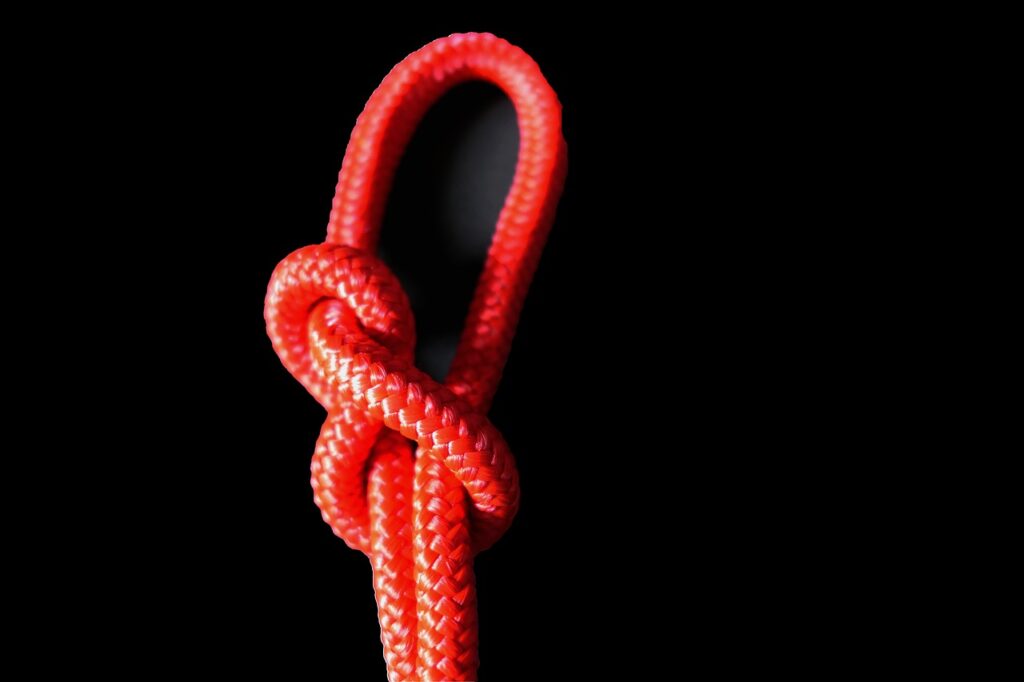
Climbing ropes are essential tools for climbers, providing crucial safety and support during their adventures. Over time, ropes can experience wear and tear, which can compromise their strength and reliability. Recognizing the signs of wear and tear is vital to ensure your safety while climbing.
Core Damage
The core of a climbing rope is its internal structure responsible for providing strength and load-bearing capacity. Damage to the core can significantly weaken the rope and increase the risk of failure. Inspect the rope thoroughly for the following signs of core damage:
- Cuts and Abrasions: Look for any cuts, nicks, or abrasions on the rope’s surface. These can be caused by sharp rocks, metal edges, or friction against abrasive surfaces. Even small cuts can compromise the integrity of the rope, so pay attention to any visible damage.
- Soft Spots: Gently squeeze the rope along its length, feeling for any soft or mushy areas. Soft spots indicate internal damage, such as broken or stretched fibers within the core. These weakened areas can be a potential point of failure and should be addressed promptly.
Sheath Integrity
The sheath is the protective outer layer of the climbing rope, shielding the core from external forces. Damage to the sheath can expose the core, making the rope more susceptible to wear and reducing its overall strength. Check for the following signs of sheath damage:
- Fraying and Fuzziness: Examine the rope’s surface for frayed or fuzzy sections. These can occur from repeated use, rubbing against rough surfaces, or contact with sharp objects. If left unchecked, fraying can progress, leading to sheath slippage and core exposure.
- Abrasion Marks: Look for noticeable abrasion marks along the length of the rope. These may appear as areas of increased wear, smooth patches, or thinning of the sheath material. Abrasion marks can indicate the presence of external forces that can compromise the rope’s integrity.
Stiffness and Loss of Flexibility
A climbing rope should maintain its flexibility and suppleness to ensure easy handling and knot tying. Loss of flexibility and increased stiffness can be indicators of wear and age. If your rope feels excessively stiff or lacks its original pliability, it may be a sign that it has reached the end of its lifespan.
Excessive Elongation
Elongation refers to the amount of stretch a rope undergoes when subjected to force. While some elongation is expected, excessive elongation can be a sign of wear and tear. To test for elongation, measure a specific length of the rope, apply a known load, and compare the results to the manufacturer’s specifications. Significant deviations may indicate a compromised rope.
Age and Usage
The age of a climbing rope and the intensity of its use are important factors to consider. Ropes have a limited lifespan, even with proper care and maintenance. Over time, the cumulative effects of falls, exposure to the elements, and general wear can degrade a rope’s performance and strength. If your rope is nearing its recommended retirement age, it’s crucial to be extra vigilant in checking for signs of wear and tear.
What Causes Ropes to Wear Out?
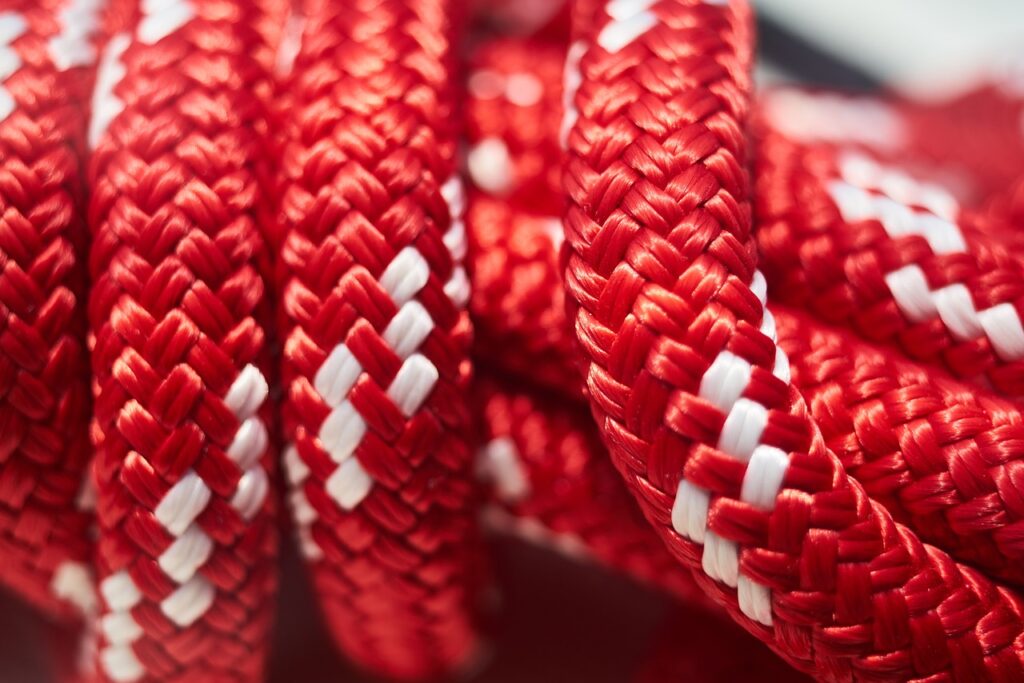
Climbing ropes are subject to rigorous use and exposure to various elements, resulting in wear and tear over time. Understanding the factors that contribute to rope deterioration is crucial for climbers to ensure their safety and the longevity of their equipment. Let’s explore some common causes that lead to rope wear and potential damage:
Friction and Abrasion
Friction is one of the primary culprits behind rope wear. When a rope repeatedly rubs against rough surfaces such as rock edges, carabiners, or quickdraws, it can lead to abrasion. Over time, this friction wears down the rope’s protective sheath, compromising its integrity and exposing the core to potential damage. Constant contact with sharp edges or rough textures can accelerate abrasion, making it vital to inspect your rope regularly for signs of wear.
Falls and Impact Loading
Climbing ropes are designed to absorb the energy generated during falls, protecting the climber from severe impacts. However, repeated falls and high-impact loading put significant stress on the rope’s fibers, potentially causing them to stretch, deform, or break. Falls onto sharp edges or rough surfaces can further exacerbate the damage. Even if the rope doesn’t visibly show signs of wear, the internal fibers may have experienced strain, reducing their strength and compromising the rope’s safety.
Exposure to Moisture and UV Rays
Moisture and ultraviolet (UV) radiation can have detrimental effects on climbing ropes. Prolonged exposure to moisture, whether from rain, snow, or wet conditions, can weaken the rope’s fibers, making them more susceptible to damage. Additionally, UV rays from sunlight can degrade the rope’s materials, leading to discoloration, loss of strength, and diminished performance. It is essential to dry and store your rope properly after each use and avoid extended exposure to direct sunlight.
Chemical Contamination
Contact with chemicals, such as acids, solvents, or corrosive substances, can cause significant harm to climbing ropes. Chemical contamination can lead to the deterioration of rope materials, weakening the fibers and reducing their load-bearing capacity. It is crucial to keep your rope away from potential sources of contamination and ensure proper handling and storage to prevent chemical damage.
Improper Storage and Care
Inadequate storage and care practices can contribute to premature rope wear. Storing your rope in damp or humid environments can promote mold or mildew growth, compromising its strength. Leaving the rope exposed to extreme temperatures, such as excessive heat or freezing conditions, can also degrade its materials. Furthermore, neglecting routine cleaning, inspection, and maintenance can allow dirt, sand, or debris to accumulate, accelerating wear and affecting the rope’s performance.
Overuse and Age
Lastly, the natural aging process and overuse play a significant role in rope deterioration. Even with proper care, climbing ropes have a finite lifespan. As a rope age, its fibers gradually weaken and lose their elasticity. The number of falls, frequency of use, and the overall workload the rope endures also influence its lifespan. Regular inspections and retirement based on manufacturer recommendations are crucial to ensure you replace your rope at the appropriate time.
How to Extend the Lifespan of Your Climbing Rope?
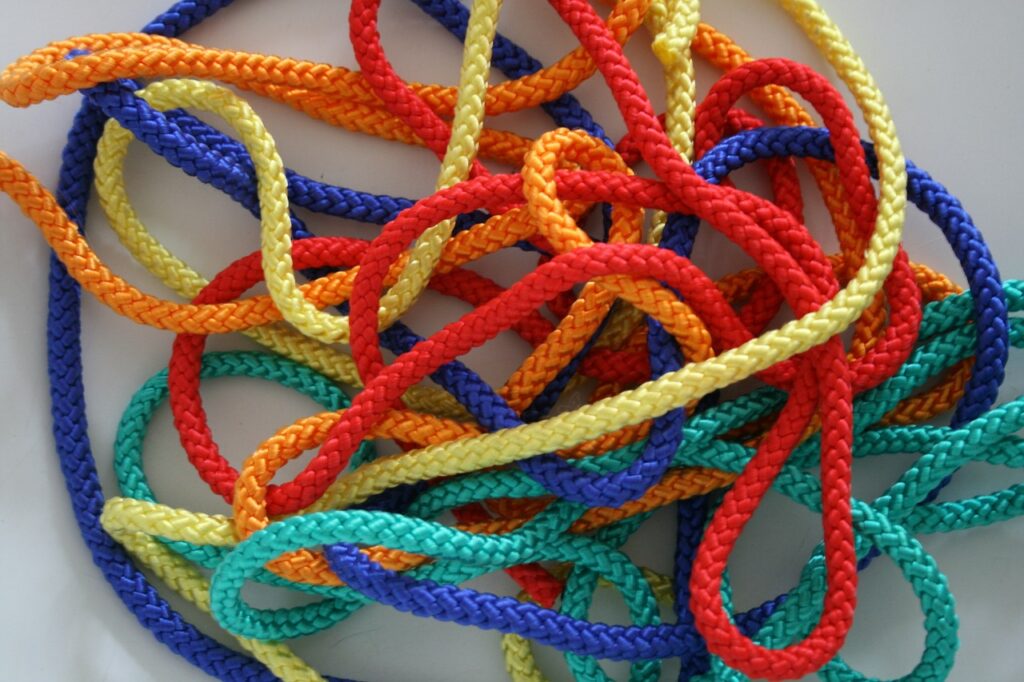 While climbing ropes do have a limited lifespan, you can take steps to extend their longevity:
While climbing ropes do have a limited lifespan, you can take steps to extend their longevity:
- Proper Cleaning: Regularly clean your rope using a mild detergent and warm water to remove dirt, grit, and contaminants that can accelerate wear.
- Careful Handling: Avoid dragging the rope across rough surfaces and sharp edges. Use rope bags or tarps to protect the rope during transport and storage.
- Storage: Store your climbing rope in a cool, dry place away from direct sunlight and extreme temperatures. Coil it loosely to prevent kinks or twists.
- Avoid Chemical Exposure: Keep your rope away from harmful chemicals, solvents, and acids that can degrade its material.
- Retire Old Rope: Replace your climbing rope after its lifespan or if you notice significant signs of wear or damage.
When to Retire a Climbing Rope: 20 Most Important Signs!
Here are 20 signs indicating it’s time to retire your climbing rope:
- Core shot or visible damage to the core.
- Excessive sheath slippage.
- Frayed or loose threads on the sheath.
- Flat spots or noticeable flattening.
- Excessive stiffness or inflexibility.
- Discoloration, especially in specific sections.
- Severe abrasion or wear on the sheath.
- A high number of falls or impact events.
- Evidence of mildew or mold growth.
- Consistent exposure to extreme temperatures.
- Chemical damage or exposure to corrosive substances.
- Loss of diameter consistency throughout the rope.
- Knots or bulges in the rope.
- Evidence of burns or heat damage.
- Uneven or inconsistent wear on the sheath.
- A significant history of falls or heavy use.
- Evidence of UV damage or sun-bleached sections.
- High levels of dirt or grit are embedded in the rope.
- Tangled or knotted sections that cannot be safely untangled.
- An overall feeling of uncertainty or lack of trust in the rope’s integrity.
What To Do With Your Retired Old Climbing Ropes?
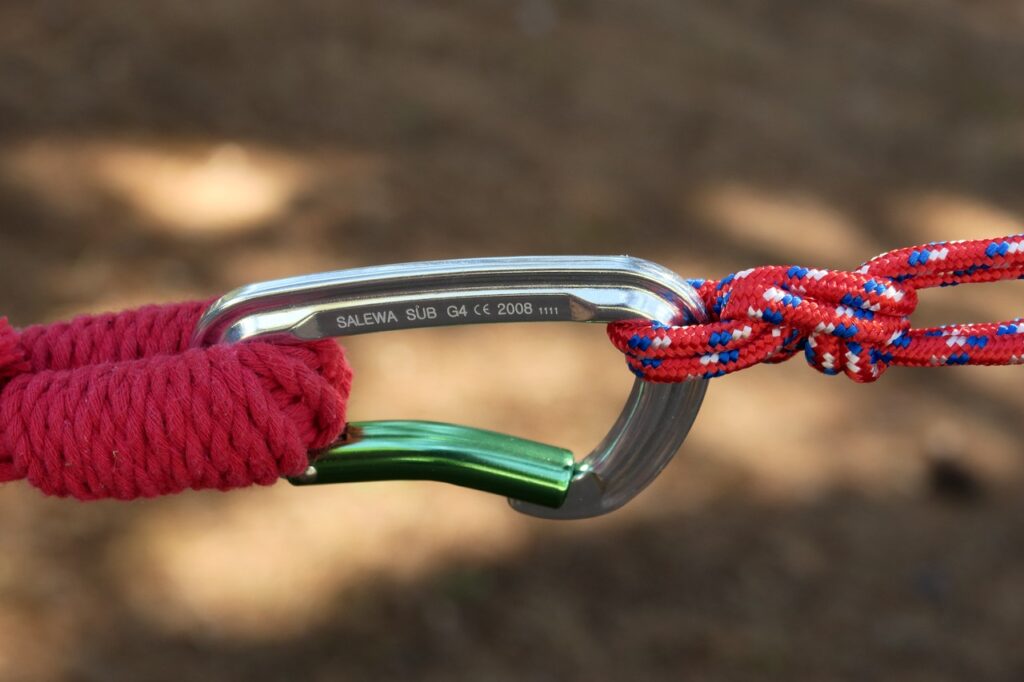 Retiring an old climbing rope is a responsible decision to ensure your safety during climbing activities. But what should you do with your retired rope? Instead of tossing it in the trash, consider these eco-friendly and creative options for repurposing or recycling your old climbing ropes:
Retiring an old climbing rope is a responsible decision to ensure your safety during climbing activities. But what should you do with your retired rope? Instead of tossing it in the trash, consider these eco-friendly and creative options for repurposing or recycling your old climbing ropes:
Repurposing for Outdoor Activities
Retired climbing ropes can find new life in various outdoor activities. You can repurpose them for camping, hiking, or as utility cords. Cut the rope into shorter lengths and use them for setting up a clothesline, securing gear, or creating makeshift handles for bags. These versatile ropes can prove handy in numerous outdoor situations.
DIY Projects and Crafts
Tap into your creativity and transform your old climbing rope into unique DIY projects and crafts. You can make decorative knot coasters, keychains, dog leashes, or even plant hangers. Explore online tutorials or let your imagination run wild to come up with innovative ways to incorporate the rope into your DIY projects. Not only will you give your retired rope a new purpose, but you’ll also add a personal touch to your creations.
Donate to Climbing Gyms or Outdoor Organizations
Consider donating your retired climbing rope to local climbing gyms or outdoor organizations. While the rope might no longer meet the safety standards for climbing, it can still serve educational or training purposes. Climbing gyms often use retired ropes for instructional sessions, knot-tying demonstrations, or rope management classes. Outdoor organizations may find a use for them in wilderness education programs or as props for outdoor skills workshops.
Pet Toys and Accessories
If you have pets, particularly dogs, your retired climbing rope can be repurposed into pet toys and accessories. Braid or tie knots in the rope to create durable chew toys or tug ropes for your furry friends. Ensure you remove any damaged sections and regularly inspect the toys for signs of wear and tear to guarantee your pet’s safety during playtime.
Rope Recycling Programs
In an effort to reduce waste and promote sustainability, some companies and organizations offer rope recycling programs. These programs collect old climbing ropes and recycle them into new products or materials. Look for local recycling centers, outdoor retailers, or manufacturers that participate in rope recycling initiatives. By recycling your retired rope, you contribute to environmental conservation and minimize landfill waste.
Proper Disposal
If repurposing or recycling options are not available or feasible, it’s important to dispose of your retired climbing rope properly. Contact your local waste management facility or recycling center to inquire about their policies on disposing of synthetic ropes. They may have specific guidelines for handling and disposing of climbing ropes, ensuring they are handled in an environmentally responsible manner.
Storage Tips for Climbing Rope
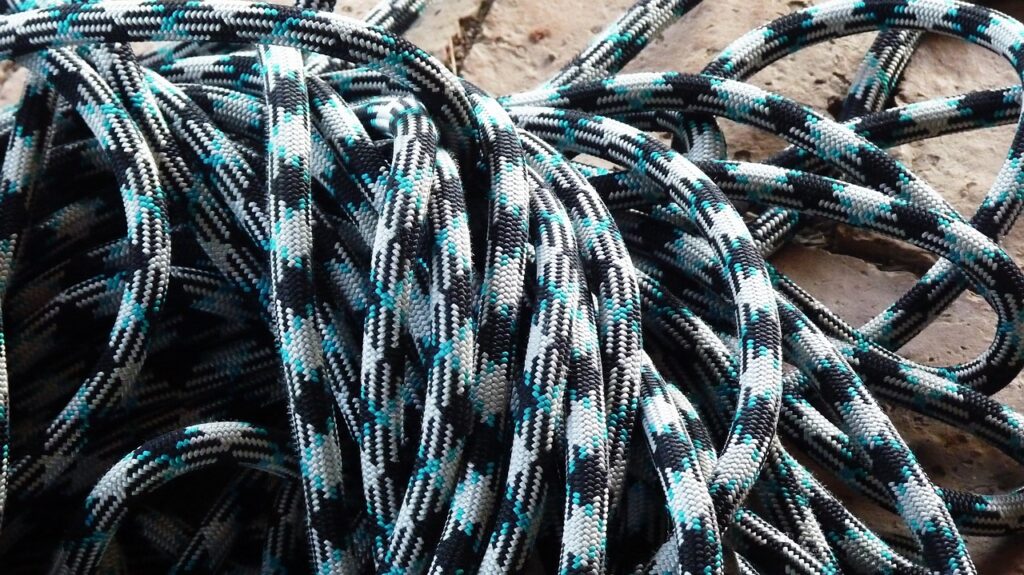 Proper storage of your climbing rope is crucial to ensure its longevity and performance. Whether you’re an avid climber or an occasional adventurer, following these storage tips will help maintain the integrity of your rope and keep it in optimal condition for your next climb.
Proper storage of your climbing rope is crucial to ensure its longevity and performance. Whether you’re an avid climber or an occasional adventurer, following these storage tips will help maintain the integrity of your rope and keep it in optimal condition for your next climb.
Clean and Dry
Before storing your climbing rope, make sure it’s clean and dry. Remove any dirt, debris, or contaminants by gently brushing the rope with a soft brush or cloth. If necessary, you can wash the rope using a mild soap specifically designed for climbing ropes. After cleaning, rinse it thoroughly with clean water and allow it to air dry in a well-ventilated area away from direct sunlight. It’s important to store a clean and dry rope to prevent mold, mildew, or rot from developing.
Coil or Roll Properly
To prevent kinks and tangles, coil or roll your climbing rope properly. Start by finding the midpoint of the rope and create a small loop. Hold the loop with one hand and use your other hand to coil the rope in a circular motion around your arm or through your fingers. Maintain consistent tension as you coil, ensuring the loops lie flat and parallel to each other. Once fully coiled, secure the rope with a rope strap or tie it with a non-tightening knot. Avoid sharp bends or twists that could damage the rope fibers.
Store in a Dry and Cool Environment
Choose a storage location that is dry and cool to maintain the rope’s quality. Avoid areas with high humidity, extreme temperatures, or direct sunlight, as these conditions can degrade the rope over time. Ideally, store the rope in a well-ventilated gear bag or a rope bag designed for climbing equipment. Keep the rope away from chemicals, solvents, and sharp objects that could cause damage.
Avoid Prolonged Pressure
Do not store your climbing rope under heavy objects or apply prolonged pressure. Excessive weight or pressure can cause the rope to deform, leading to weak spots or deformities. Hang the coiled rope or place it on a rope rack to allow it to rest naturally without strain.
Regularly Inspect and Rotate
Even in storage, it’s important to periodically inspect your climbing rope for any signs of damage or wear. Check for cuts, fraying, or other forms of deterioration that may have occurred during storage. Additionally, rotate the rope periodically by uncoiling and recoiling it in the opposite direction. This helps prevent flat spots and ensures even wear on the rope’s surface.
Follow the Manufacturer’s Guidelines
Always refer to the manufacturer’s guidelines for specific storage recommendations. Different rope brands or materials may have specific requirements or considerations. Familiarize yourself with the manufacturer’s instructions and follow them accordingly to maintain the rope’s warranty and performance.
Maintenance Tips for Climbing Rope
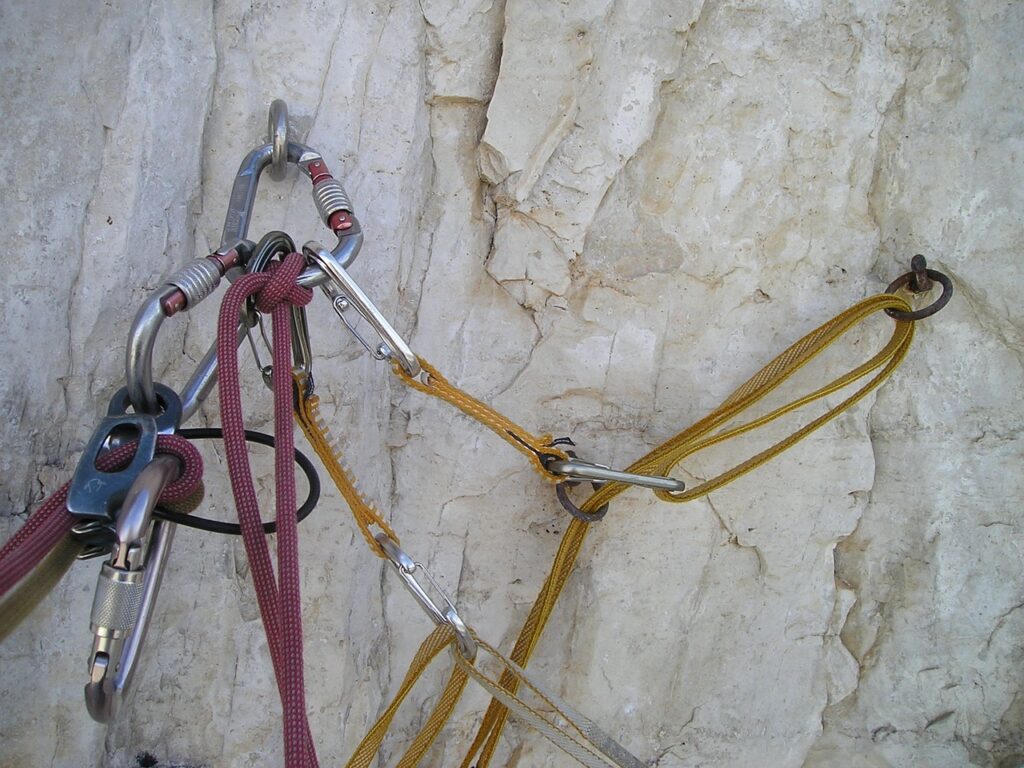
Proper maintenance of your climbing rope is crucial to ensure its longevity and, more importantly, your safety during climbing expeditions. Regular care and attention can significantly extend the lifespan of your rope while ensuring optimal performance. Here are some essential maintenance tips to keep your climbing rope in excellent condition:
Clean the Rope
Regularly cleaning your climbing rope helps remove dirt, grime, and debris that can accumulate over time. Start by filling a bathtub or large sink with warm water and a mild detergent specifically designed for climbing ropes. Gently submerge the rope and agitate it to loosen any dirt particles. Allow it to soak for a while, then rinse thoroughly with clean water. Hang the rope to dry in a cool, shaded area away from direct sunlight.
Inspect Before and After Each Use
Performing a thorough inspection before and after each use is essential to identify any signs of wear, damage, or weakness. Run your fingers along the entire length of the rope, feeling for inconsistencies such as cuts, fraying, or bulges. Check the rope’s sheath for any abrasions, excessive wear, or soft spots. Pay attention to the rope’s ends and areas where knots are tied, as they are more prone to damage. If you notice any significant issues during the inspection, consider retiring the rope or consulting a professional for further evaluation.
Store Properly
Proper storage of your climbing rope can prevent unnecessary damage and prolong its lifespan. Always coil the rope loosely, avoiding tight bends or kinks that can cause permanent deformations. Use a rope bag or a clean, dry backpack to store the rope, protecting it from dirt, moisture, and UV exposure. Store the rope in a cool, dry place away from direct sunlight and chemicals that may deteriorate its integrity.
Avoid Contact with Sharp or Abrasive Surfaces
When using your climbing rope, be mindful of its surroundings and avoid contact with sharp or abrasive surfaces. Rocks, rough edges, and sharp metal equipment can cause excessive wear and tear on the rope’s sheath. Whenever possible, protect the rope by using rope protectors or padding when climbing on abrasive surfaces. Additionally, avoid dragging the rope along the ground to prevent damage and contamination.
Minimize Exposure to Sunlight and Chemicals
Prolonged exposure to sunlight and certain chemicals can degrade the quality and strength of your climbing rope. UV rays from the sun can weaken the rope’s fibers over time, making it more susceptible to breakage. Whenever you’re not actively using the rope, keep it shaded or covered to minimize exposure. Similarly, avoid contact with chemicals such as solvents, acids, and strong cleaning agents, as they can deteriorate the rope’s materials and compromise its integrity.
Retire When Necessary
Even with proper maintenance, climbing ropes have a limited lifespan. It’s important to retire your rope when it reaches the manufacturer’s recommended retirement age or shows significant signs of wear and tear. Prioritize your safety and invest in a new rope to maintain optimal performance during your climbing adventures.
Final Thoughts
Knowing when to retire a climbing rope is crucial for every climber’s safety. Understanding the factors that influence rope durability, guidelines for lifespan, signs of wear, and how to extend its longevity allows you to make informed decisions about your climbing gear. Regular inspections, proper maintenance, and responsible usage will ensure you enjoy many safe and successful climbing adventures.
Frequently Asked Questions
Does Falling Wear My Rope Out?
Yes, falling can contribute to the wear and tear of your climbing rope. When you take a fall, especially if it involves sharp edges or rough surfaces, the rope experiences a significant amount of force and strain. This can cause the fibers to stretch and potentially weaken over time. It’s essential to inspect your rope regularly for signs of damage after falls and replace it if necessary.
Can I Still Use My Rope if It Has Sheath Slippage?
It is not recommended to use a climbing rope that has sheath slippage. Sheath slippage refers to the movement of the outer sheath independent of the core, indicating a compromised rope strength. This can result in a higher risk of failure during a climb. It’s best to retire a rope with sheath slippage and replace it to ensure your safety.
Can My Rope Lose Strength Even if I Don’t Use It?
Yes, a climbing rope can lose strength over time even if it’s not being actively used. Environmental factors, such as exposure to sunlight, moisture, dirt, and chemicals, can contribute to the degradation of the rope’s material. Additionally, improper storage or neglecting maintenance practices can also weaken the rope. Regular inspections and proper care are crucial to maintaining the strength and integrity of your rope.
Does the frequency of use influence the service lifespan of climbing ropes?
Yes, the frequency of use does influence the service lifespan of climbing ropes. The more you use your rope, the quicker it will wear out. Regular use exposes the rope to friction, abrasion, and potential damage. Factors such as falls, rough surfaces, and intense climbing activities can accelerate wear and tear. It’s important to monitor the condition of your rope and retire it when it shows signs of significant wear or damage.
In case of which damages must the rope be replaced?
There are several damages that indicate the need for rope replacement. Some of these damages include:
- Core shot: A visible, frayed, or damaged core indicates significant wear and requires immediate retirement.
- Severe sheath slippage: If the sheath moves independently from the core or shows visible slippage, the rope’s strength is compromised.
- Frayed sheath: Fraying or loose threads on the rope’s outer sheath can indicate wear and reduced strength.
- Flat spots or flattening: Flattened areas on the rope can be a sign of repeated impact or compression, weakening the fibers.
- Stiffness: A rope that has become excessively stiff or inflexible suggests aging and wear, compromising its performance and safety.
Do I have to discard a rope after a serious fall?
After a serious fall, it’s crucial to thoroughly inspect your climbing rope for any signs of damage. Falls can put significant stress on the rope, and there may be hidden internal damage that is not immediately visible. If you notice any signs of wear, core damage, or other significant issues, it’s advisable to retire the rope and replace it. Safety should always be the top priority, and using a compromised rope can put you at risk during future climbs.









Discussion about this post